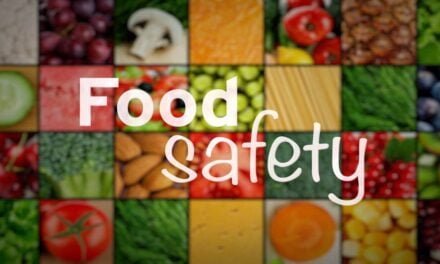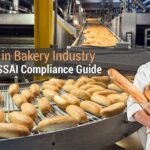Recent studies have shown that a great amount of raw and finished products get deteriorated due to poor transportation and storage. FSSAI has developed detailed and specific requirements to be followed by all FBOs. Anurag Mishra and Nuno F Soares explain these requirements for Distribution and Storage of Raw, Semi-Finished and Finished Materialin detail, in this article of Quality management series.
The Food Processing Industry has emerged as one of the important segments in terms of its contribution to the Indian economy, as it contributes 9% and 11% of GDP in the Manufacturing and Agriculture sector respectively. The number of registered food processing units has increased from 37,450 in 2013-14 to 38,608 in 2014-15.
With an increasing number of units and varieties of processed foods, what stands out is ‘Quality’ of the product and due to competition, consumer awareness and regulations, most of the companies are maintaining Quality & Food safety while manufacturing. But it’s equally important to maintain the quality in distribution and storage till the product reaches to a consumer so that consumers can enjoy the signature taste and quality which was maintained during the manufacturing. The Food Standard Authority of India (FSSAI) has developed detailed and specific requirements to be followed by all FBOs. However, it is also about caring for your stock during distribution and storage in the warehouse, distributor’s place.
Recent studies have shown that a great amount of raw and finished products get deteriorated due to poor transportation and storage.
The FSSAI has developed detailed and specific requirements to be followed by all FBOs (Food and Beverage Operators) which includes bakery industries as well. For distribution and storage, FSSAI has divided requirements into 5 sets i.e. Design & Facilities, Control of Operation, Maintenance & Sanitation, Personal Hygiene, and Training & Complaint handling.

Storage facility/warehouse must have FSSAI License for storing bakery items and license must be displayed at the prominent location.
In this article, we will understand all 5 requirements in detail.
Food Transportation Requirements
Design of the Vehicle:
It’s important to ensure stock is transported in a controlled way which includes vehicle must be covered properly so the stock is free from contaminants like dust, dirt, infestation and other foreign materials and prevented from bad weather. The design & construction of the transport vehicles must permit adequate maintenance, cleaning, storage of food, and do not provide entry or harborage to pests. Transport vehicles should be equipped to achieve & maintain the required temperature, wherever required, and designed in a way that allows monitoring the temperature from outside. To avoid exposure to external weather conditions and pilferage, the vehicle must have a proper locking/ sealing facility.
Operational Control:
Transporter must have FSSAI License for transporting Processed Foods. Before loading the stock, the vehicle must be inspected for debris, dust, previous loads, pest activity & other non-food or hazardous items (record of this inspection must be maintained as food safety officer may check the same at the time of visit). Hazardous material like chemicals, fuels, flammable materials must not be transported with food material as this may lead to chemical hazards to the product and in case of mixed food load materials must be compartmentalized to prevent cross-contamination. For smaller companies, it will not be possible to have a dedicated vehicle so it’s possible to use random vehicles for transportation but if a vehicle is changed from transporting non-food products to transporting food products, proper cleaning is conducted to avoid contamination of food and record of this activity must be maintained. Transport of chilled products is done at 50 C or below and of frozen products at –180 C or below. Bulk foodstuffs in liquid, granulate or powder form must be transported in containers/tankers reserved for the transport of foodstuffs & they should be marked “for foodstuffs only”

The premises must be kept clean and there are no seepage, cobwebs, dirt, dust, etc. that can compromise food safety
Maintenance and Sanitation:
The interior of the vehicle should be kept clean and there are no seepage, cobwebs, dirt, dust, etc. that can compromise food safety. A pest control program for the vehicle should also be for available& pest control activities are carried out by trained and experienced personnel (records should be maintained). Foods that become unfit during transportation whether due to temperature abuse or otherwise are identified and disposed of in a manner that precludes the food from being used for human consumption.
Personal Hygiene and Training
Food handlers must maintain personal cleanliness and personal behavior. In case of handling naked products, food handlers must not be suffering from a disease or illness or with open wounds
or burns as it may lead to contamination also food handlers must be equipped with suitable aprons, gloves, headgear, shoe cover etc. In the case of the packed pack using gloves and apron is not a must (but desirable).
Food Storage Requirements
Design and Facilities:
Storage facility /warehouse must have FSSAI License for storing bakery items and license must be displayed at the prominent location. The design and layout of the warehouse must permit adequate maintenance and cleaning and do not provide harborage to pests. The facility/warehouse must have the facility to provide potable and non-potable water with adequate arrangements for drainage & waste disposal. The premise must have sufficient lighting (more than 500 Lux) and lighting fixtures are covered to protect food from contamination (especially where unpacked food is stored). An adequate and separate storage facility should be in place for food products; chemicals & other hazardous substances; personal items etc. The facility must be capable of achieving the required temperature and humidity. Personnel hygiene facilities are available. (Adequate number of handwashing facilities, toilets, change rooms, rest & refreshment room etc.).The facility must be capable of achieving & maintaining temperature is available (such as a freezer, chillers etc.) for storing products requiring temperature control.
Control on Operations:
Stock must be kept on pallets (preferably plastic pallets) and must be kept away from the wall (minimum 18 inches gap is desirable) so that contamination can be avoided. Products must be handled with care at receiving picking and dispatch – materials must not be lying on the floor or in an unorganized manner or allowed to accumulate. The facility is maintained neat and clean, free from mold growth and any unwanted materials as this increases the chance of contamination. Being a very less shelf life, one of the critical requirements for storing processed food is maintaining FEFO ( First in First Out) so stock receiving and delivery must be done in FEFO manner. Frozen products must be stored in frozen rooms maintained at –18 degree C or below. Chilled products must be stored in cold rooms maintained at 50 C or below. Records of temperature monitoring must be maintained.
Maintenance and Sanitation:
The premises must be kept clean and there are no seepage, cobwebs, dirt, dust, etc. that can compromise food safety (record of cleaning should be maintained). Cleaning of storage equipment (pallets etc.), food premises is done as per the defined cleaning schedule & cleaning program. Cleaning program must be defined in a manner so it avoids any kind of dust/dirt accumulation and pest related issues. Food premises and equipment (like forklifts etc.) maintained in an appropriate state of repair and condition (records must also be maintained). Pest control program must be in place and only approved pest control chemicals must be in use for treating the pests. It is recommended that certified pest control agencies (like PCI, PCMW etc.) should be partnered for pest control so that chemical contamination can be avoided. Pest control records and observation must be maintained. For rodent control, a sufficient number of traps must be in place. Traps must be of Glue pads type inside the facility and for outer premises, chemical traps can be placed. The facility must be free from any kind of pest activity like larva, droppings etc. Food waste and other refuse must be removed periodically from food storage areas to avoid accumulation.
Personal Hygiene and Training:
Food handlers should have the necessary knowledge and skills & trained to handle food safely (Record of training must be maintained). In case of handling the naked product, food handler must undergo annual medical examination and inoculation of food handlers must be ensured against the enteric group of diseases as per recommendations (medical records must be maintained for each food handler). Food handlers must not be suffering from a disease or illness or with open wounds or burns as it may lead to contamination also food handlers must be equipped with suitable aprons, gloves, headgear, shoe cover etc. In the case of the packed pack using gloves and apron is not a must (but desirable). To ensure proper execution of the system an internal audit program must be in place and the Food Safety officer may check the record of internal audit. The industry must have a robust process for handling customer complaints.
The above requirements cover all the mandatory practices that need to be followed as per FSSAI. Food Safety and Standards Authority of India (FSSAI) has developed an inspection checklist for facilitating Food Safety Officers to efficiently inspect the Food Business Operators FBOs. The inspection checklists are used to identify the level of compliance with each requirement that is set out in the regulation These inspection checklists are based on revised Schedule 4 of Food Safety and Standards and available on the FSSAI web portal <https://fssai.gov.in/>.
The Food Safety Officer will inspect the facility of the FBO according to the requirements as laid down in the inspection checklist and accordingly, will mark the finding as for compliance (C), non-compliance (NC), partial compliance (PC) & Not applicable/Not observed (NA).
Sub-sequentially awarding the marks as per the finding against the requirements, total marks are calculated & based on the final marks, grading of the FBOs is done. The grading has been divided into 4 levels i.e.
a. Compliance with A+ Grade ( Exemplar ) – 90 % & Above Score
b. Compliance With A Grade ( Satisfactory) – 80 to 89 %
c. Need Improvement with B Grade – 50 to 79 %
d. Non Compliance and No Grade – Less than 50 %
Following the above requirements, we can kill the profit eaters and achieve regulatory compliance during distribution and storage of raw, semi-finished and finished material.















